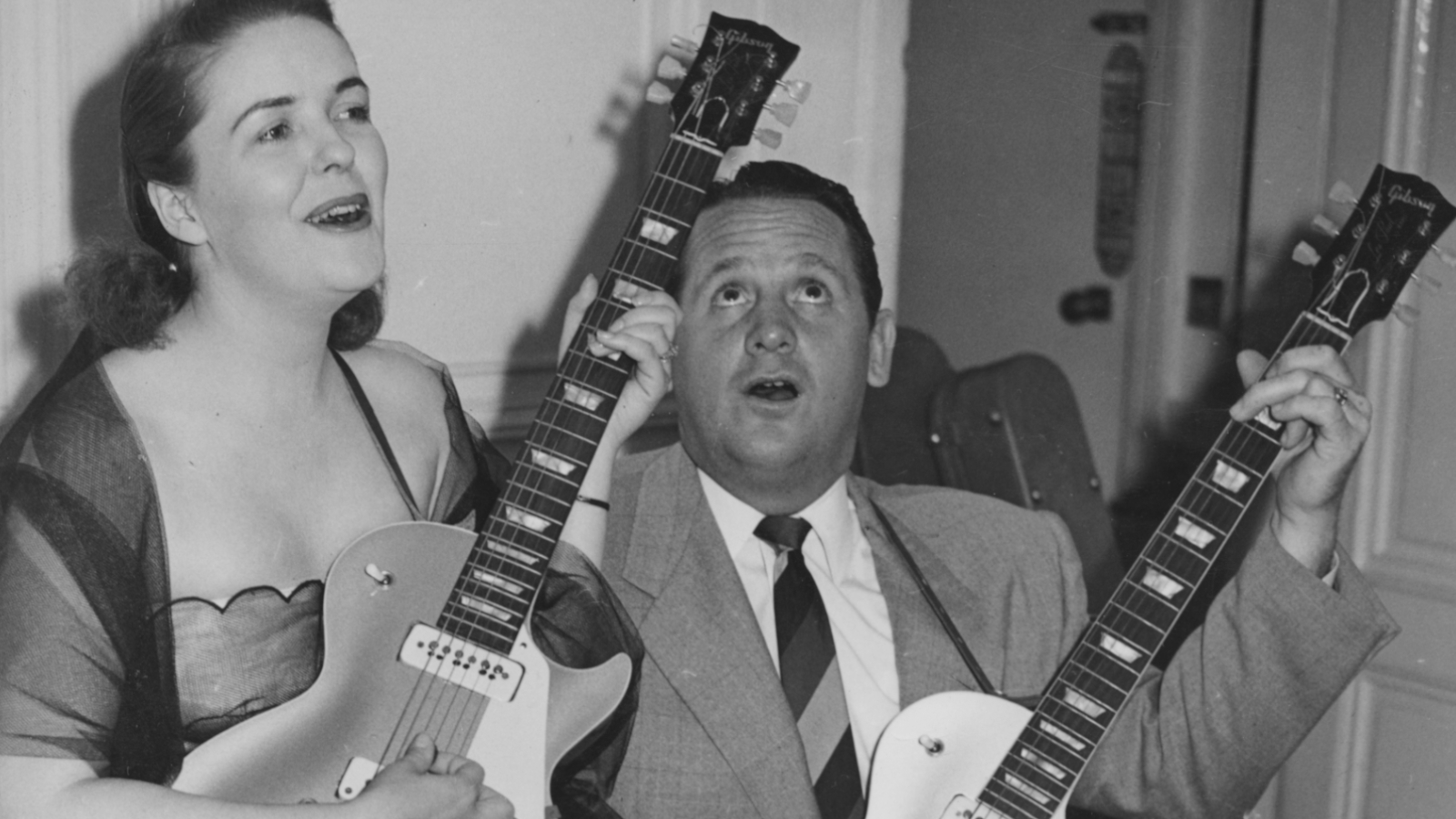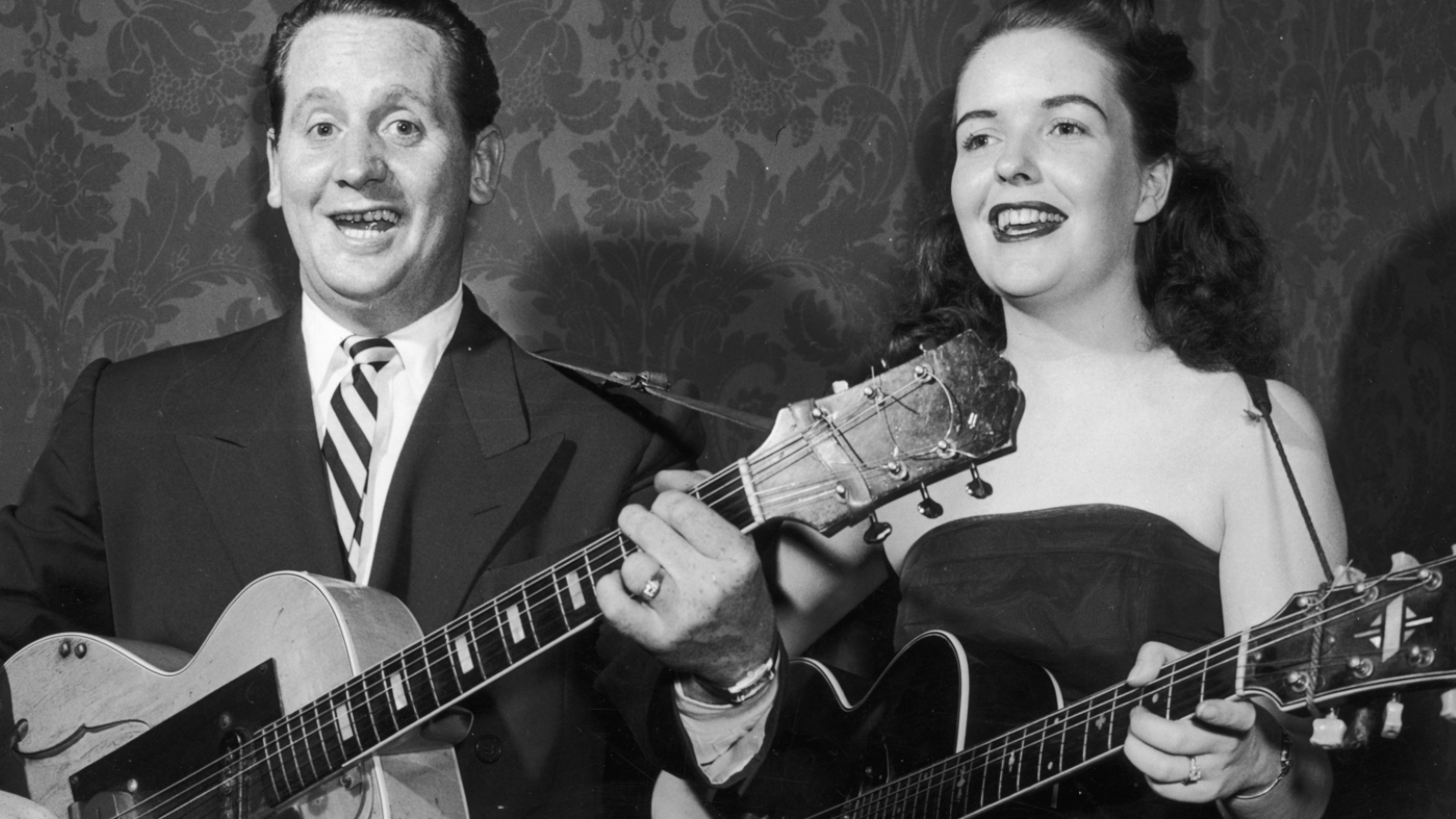Watch Guitar Legends Les Paul and Mary Ford Demonstrate Their Pioneering Multitrack Recording Techniques
This entertaining TV clip from 1953 proves the duo were way ahead of the game.

On this day in 1924, singer and guitarist Iris Colleen Summers aka Mary Ford was born.
Along with her husband, Les Paul, she helped push electric guitar music into uncharted territory, adopting a humorous and wildly experimental approach that only served to popularize rather than marginalize their music.
Performing and recording together from the mid-‘40s until the mid-‘60s, Les Paul and Mary Ford reached their zenith in the earlier part of the ‘50s.
During their heyday, the duo scored 16 top ten hits including a unique version of the jazz standard "How High the Moon" that spent an incredible nine weeks at the number one spot.
Les Paul recalled the first time he connected with Mary Ford in his autobiography Les Paul in His Own Words.
The first thing I find out is she's a guitar nut
Les Paul
“It's another of those amazing connections that happen when you're not expecting it,” said the guitarist.
“The first thing I find out is she's a guitar nut... We talk, and she is very knowledgeable about the different guitar players who were known at the time, which was very striking to me.”
All the latest guitar news, interviews, lessons, reviews, deals and more, direct to your inbox!
Amusingly, when the pair first met during her audition at Les Paul’s house, she didn’t believe it was him.

“Her eyebrows go up, and she says, ‘That's not Les Paul, that's the gardener!” continues the guitar legend.
Her eyebrows go up, and she says, ‘That's not Les Paul, that's the gardener!
Les Paul
“The audition went fine, and afterward, the two of us went out to get something to eat. It was then she told me the reason she was reluctant to believe I was really Les Paul.
“It was because I was her favorite guitarist, who she had defended in argument after argument as being the best, always making my case to those who believed Django or whoever was better.
“When she first saw me, the way I looked was a shock because it didn't fit her mental image at all.”

As well as being one of the earliest proponents of the solidbody electric guitar – eventually leading to the release of his groundbreaking Gibson signature model in 1952 – inventor/musician Les Paul was a pioneer of numerous recording studio techniques.
While experimenting with multitrack recording, looping, overdubbing, delay and phasing Les Paul blew the doors wide open for all that followed.
And in this entertaining clip from British-American writer Alistair Cooke's television show Omnibus, Les Paul and Mary Ford demonstrate some of those truly innovative techniques.
“You can record one part of a song and then you can play it back to yourself,” explains Cooke as he introduces the concept of multitrack recording to America.
“And then you can accompany that part and keep on recording.”
Order Les Paul in His Own Words here.
Rod Brakes is a music journalist with an expertise in guitars. Having spent many years at the coalface as a guitar dealer and tech, Rod's more recent work as a writer covering artists, industry pros and gear includes contributions for leading publications and websites such as Guitarist, Total Guitar, Guitar World, Guitar Player and MusicRadar in addition to specialist music books, blogs and social media. He is also a lifelong musician.

